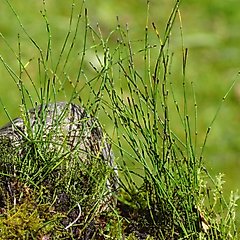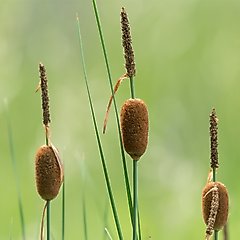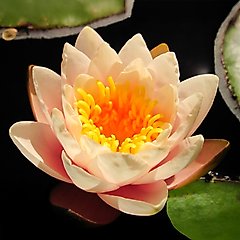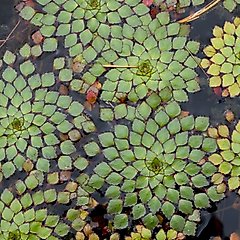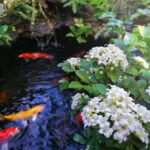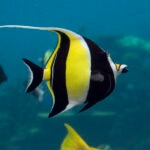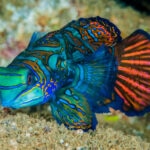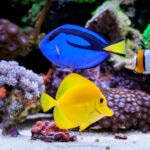15 Pond Plants To Beautify Your Outdoor Fish Pond
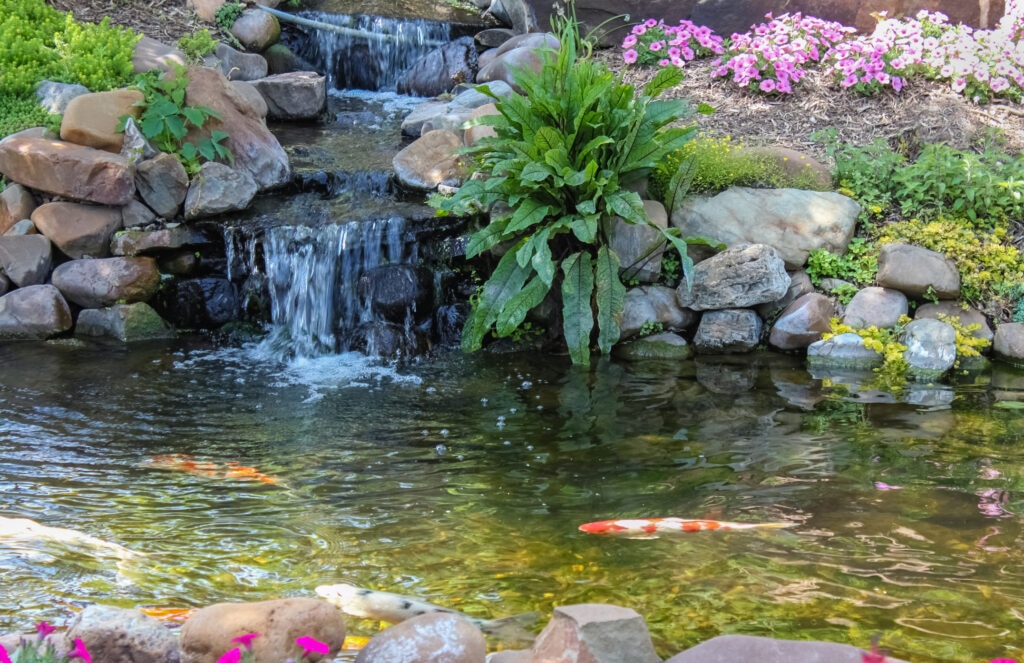
Photo by Susan Vineyard/iStoc / Getty Images Plus via Getty Images
Outdoor fish ponds turn backyards into private oases with gorgeous greenery and beautiful fish. If you’re building a fish pond in your backyard, you may wonder which plants are the best for ponds—specifically your pond!
The pond plants you choose depend on where you live and how deep your pond is, because some plants, like marsh marigolds, do better at the marshy edges, while others like water lilies need to be planted in the substrate with 1–2 feet of water on top.
If you’re struggling to decide on pond plants, here is a short list for inspiration.
Key Takeaways
- Pond plants not only make your pond look pretty, but they are also good for the overall ecosystem.
- Pond plants are categorized by specific zones depending on how deep they need to be planted.
- Always check to see which plants are compatible with your fish.
Why Are Pond Plants Important?
Aquatic plants balance beauty with function in your fish pond. Just like a wild ecosystem, plants help keep the water clean, support koi fish health, and provide shelter—and sometimes even food.
When chosen carefully and kept appropriately, your pond plants will create a healthy habitat for the fish and other animals that will live there.
Best Pond Plants by Zone Category
While hardiness zones help gardeners decide which plants will thrive in their climate, pond planting zones give vital information about where pond plants will thrive within a given pond. Both are important and must be considered when deciding which plants to include in your fish pond.
Because different types of pond plants thrive at varying water depths, they’re categorized into zones that reflect the approximate depth. Some plants, like horsetail, thrive at the shoreline in wet, soggy soil with their stems and leaves out of the water, while other pond plants, like hornwort, only grow when completely submerged.
When choosing aquatic plants for your pond, consider where each plant grows best, which pond fish it’s compatible with, and whether it fits your pond’s planting zone.
Zone 1: Bog Plants (Saturated Soil)
Bog plants enjoy wet soil but prefer keeping their leaves and stems dry. They grow best around the edges of ponds, where they can get the moisture they need without getting too wet for too long. Many are particularly helpful in filtering excess nutrients or pollutants.
Marsh Marigold (Caltha palustris)
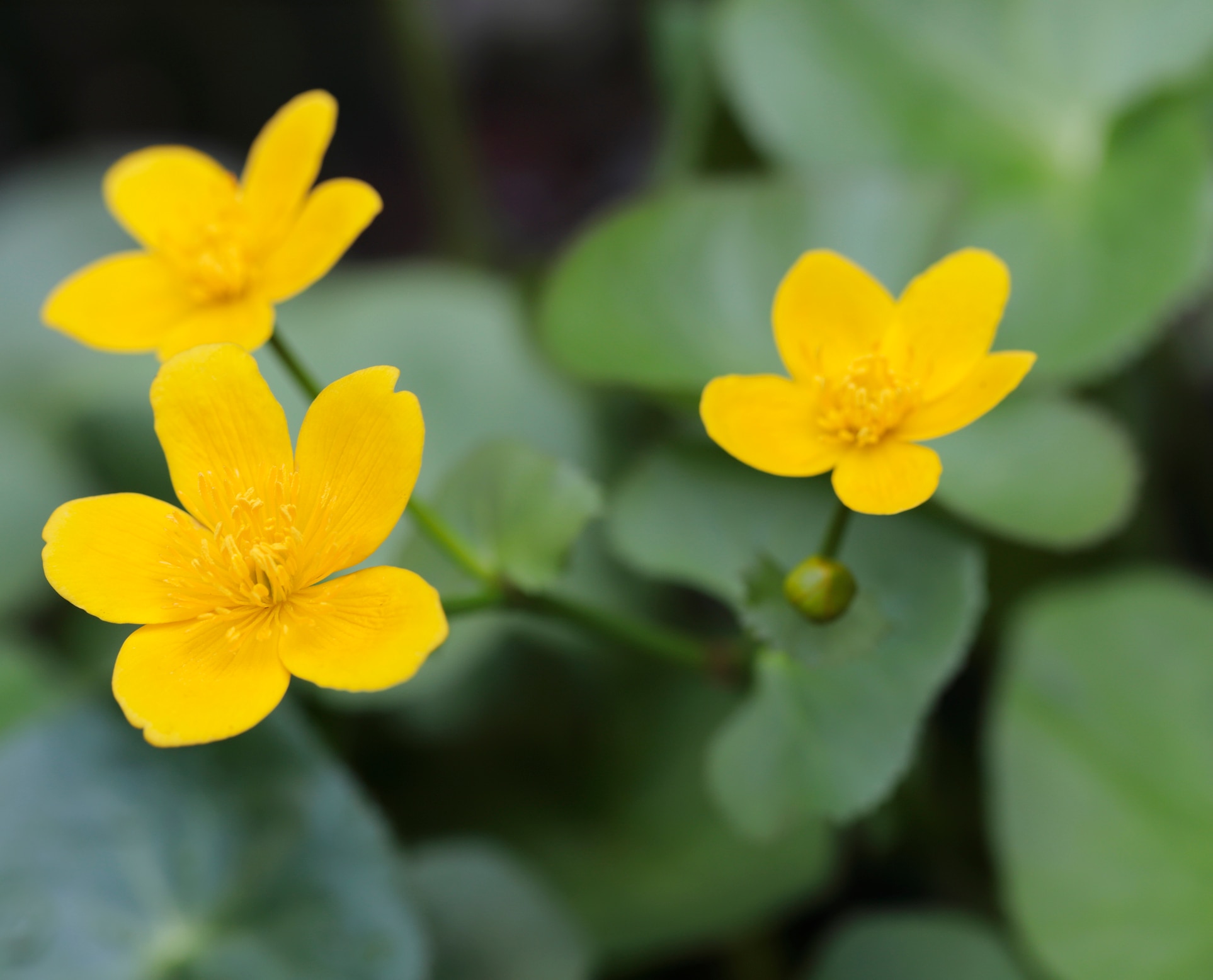
Mantonature/iStock / Getty Images Plus via Getty Images
This bushy little flower has kidney-shaped leaves and bright yellow flowers, similar to its buttercup cousins. Marsh marigolds can help prevent string algae overgrowth and bacterial blooms.
Marsh Fern (Thelypteris palustris)
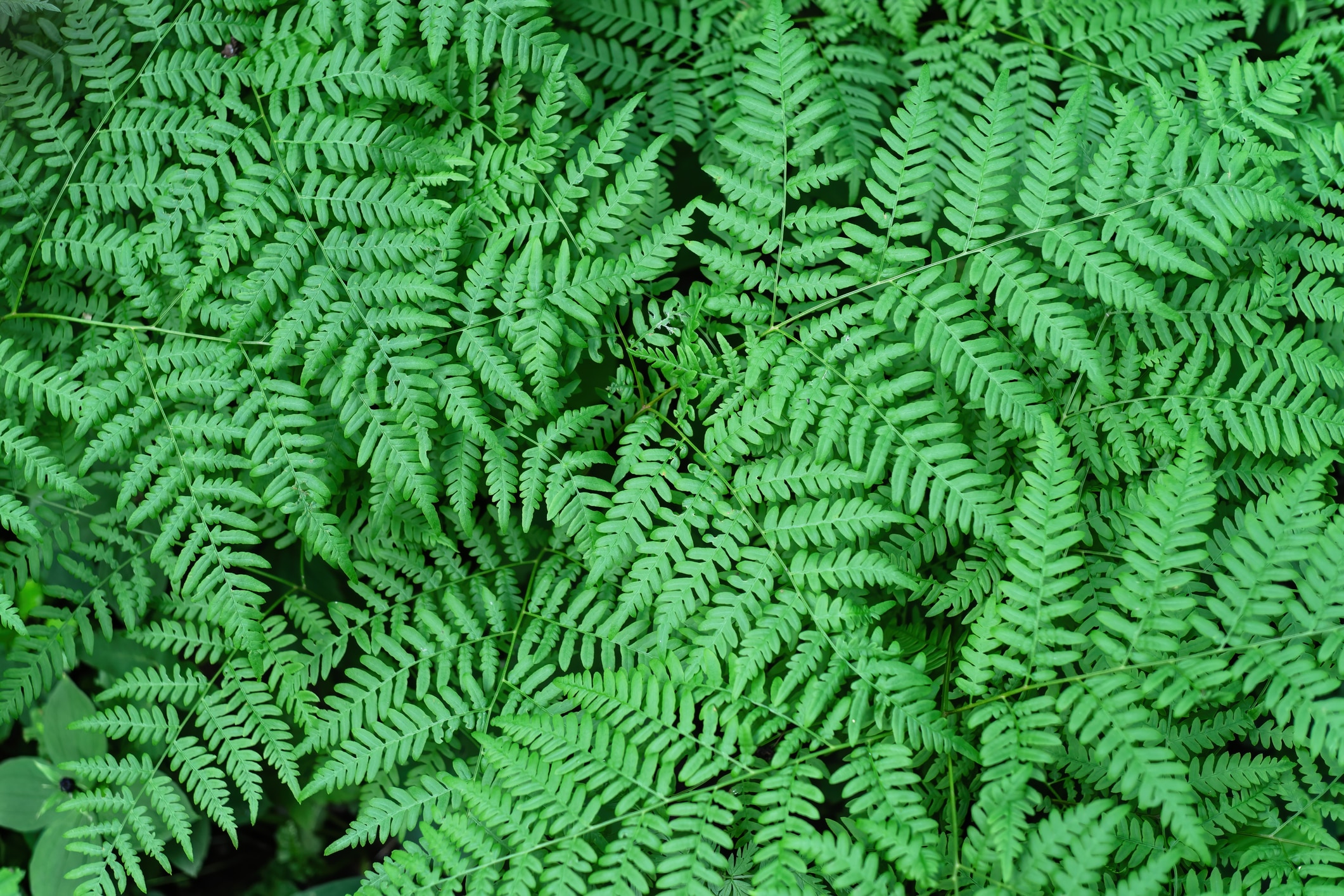
Kukurund/iStock / Getty Images Plus via Getty Images
A North American native, marsh ferns enjoy full to partial sun with nearly any boggy to moderately wet soil. Check your USDA planting zone to make sure they’ll work around your pond.
Dwarf Horsetail (Equisetum scirpoides)
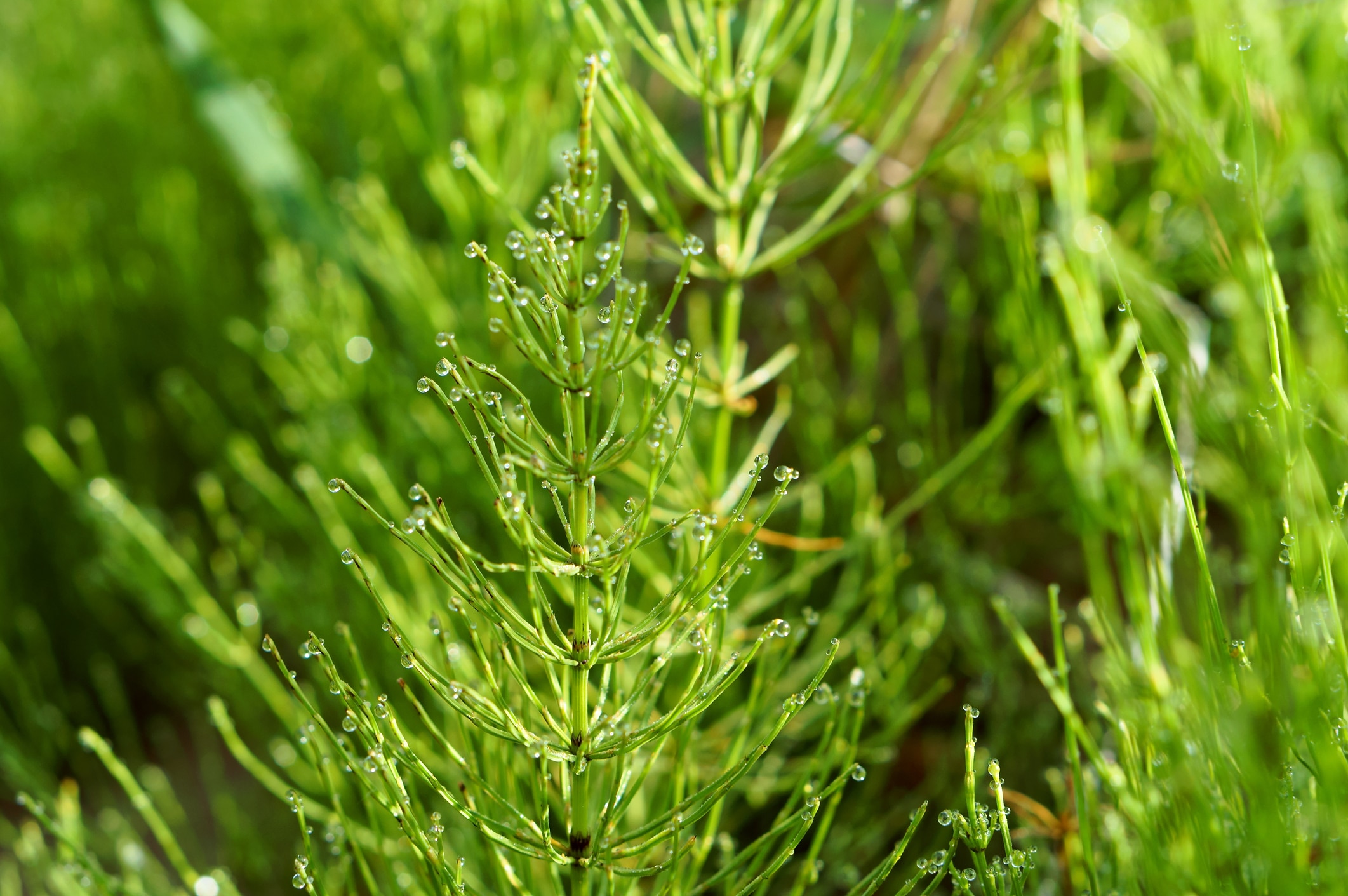
ZimaNady_klgd/iStock / Getty Images Plus via Getty Images
Photo by Chewy
Dense, dark green colonies of dwarf horsetail thrive along pond shorelines where their crown can stay out of the water. They’re great in small ponds with plenty of sun.
Recommended Product
Zone 2: Marginal Plants (Water Depth: Up to 15 Centimeters)
Marginal plants prefer shallow water, where their roots are secure in the substrate, their crowns stay submerged, and their leaves and stems often grow above the water’s surface. They filter harmful toxins, provide shade, and shelter small fish.
Creeping Jenny (Lysimachia nummularia)
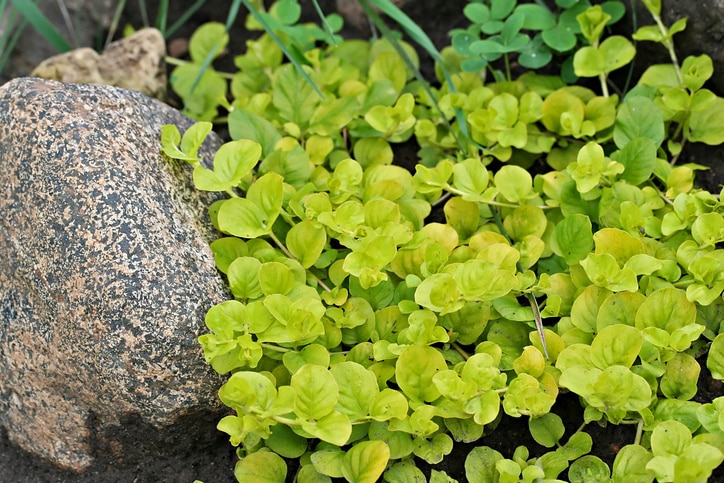
MartaJonina/iStock / Getty Images Plus via Getty Images
Creeping Jenny plants are also called moneywort because of the coin-like shape of their leaves. Depending on the species, it also produces yellow or white flowers that attract pollinators like bees and butterflies.
Creeping Jenny can grow up to 12 inches tall and does best in up to 2 inches of water. Its long, branching growth offers shade and protection to small or juvenile fish.
Iris (Iris pseudacorus, Iris laevigata)
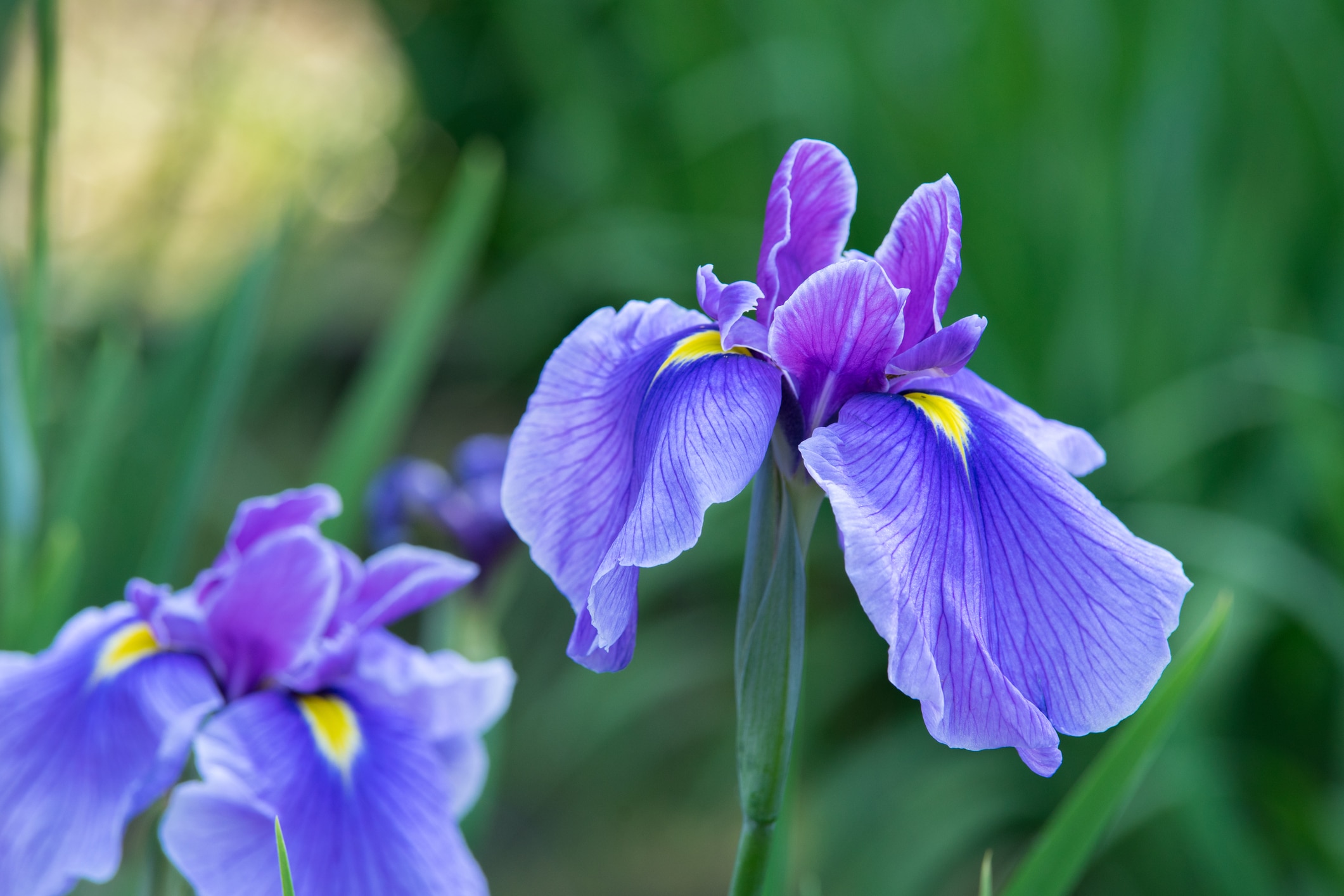
inomasa/iStock / Getty Images Plus via Getty Images
This marginal plant needs enough water to keep the crown covered throughout the year. Iris produces purplish-blue flowers the first year after it’s established. Blue irises can grow 5 feet tall.
Recommended Product
Dwarf Cattail (Typha minima)
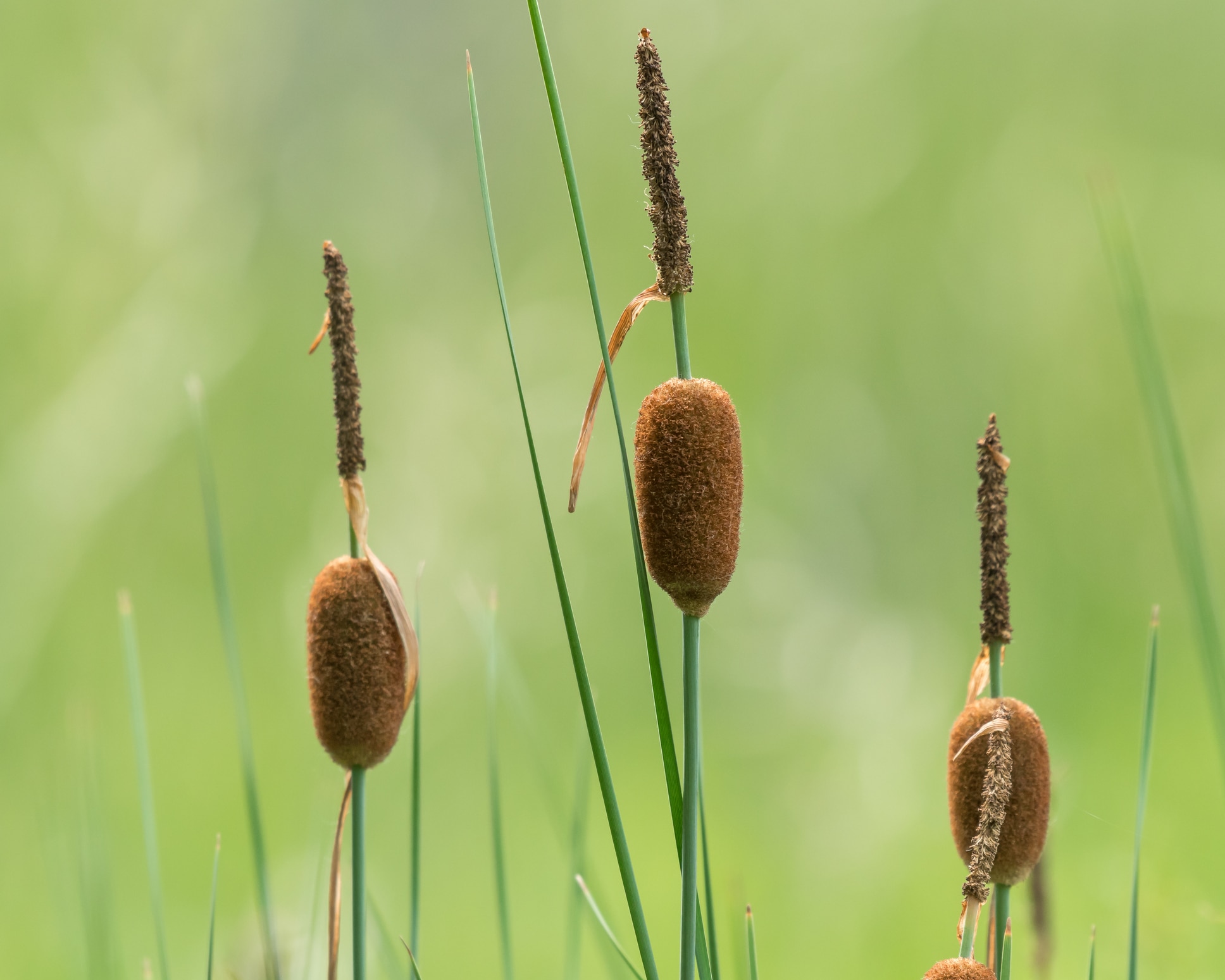
Stefan Rotter/iStock / Getty Images Plus via Getty Images
This miniature cattail version grows to only about 18 inches tall, making it terrific for small backyard fish ponds. Dwarf cattails grow best with their crowns submerged in up to 4 inches of water. They do well in full sun and provide nooks and crannies for small fish to hide.
Recommended Product
Zone 3: Deep Marginal Plants (Water Depth: 15–40 Centimeters)
Moving away from the shoreline, plants that need more water include sweet flags, full-size cattails, and bulrush. Deep marginal plants thrive in cooler water and grow tall enough for their leaves to stay above the water line.
Sweet flag (Acorus calamus)
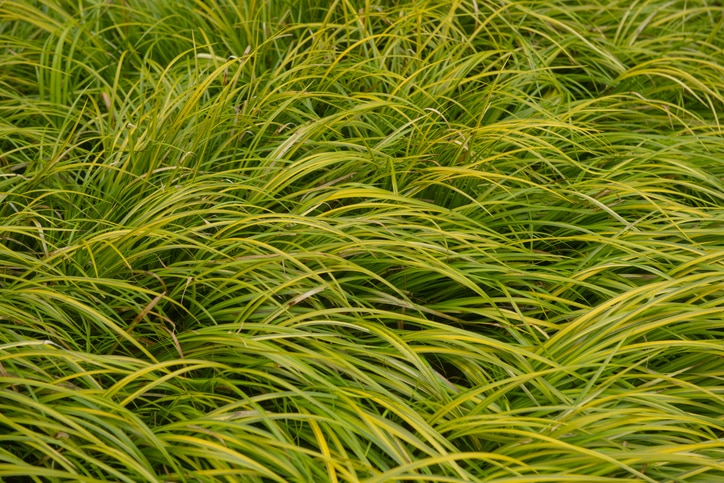
pcturner71/iStock / Getty Images Plus via Getty Images
This is a tall perennial herb that grows best in water up to 3 feet deep. Sweet flags have long, flat deep green leaves that can give your backyard pond a tropical look. They provide oxygen directly to the water and absorb excess nutrients, while offering spawning habitat for your fish.
Make sure you purchase native sweet flag, because Japanese sweet flag is invasive in North America and Europe.
Pickerel Rush (Pontederia cordata)
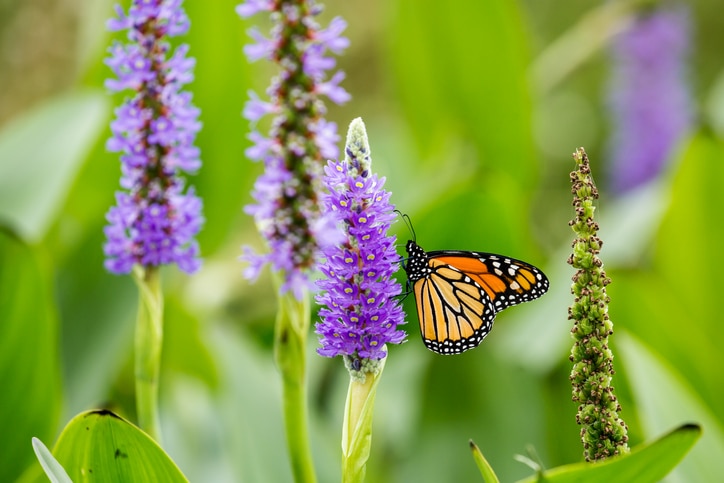
WilliamSherman/iStock / Getty Images Plus via Getty Images
Pickerel rush (also called pickerelweed) grows in wetlands, ponds, marshes, and slow-moving streams. Its leaves and purple flowers rise above the water, while the crown and part of the stems stay submerged.
While it’s an easy-care plant that thrives in full sun to partial shade, pickerel rush can become invasive.
Soft-stem Bulrush (Schoenoplectus tabernaemontani)
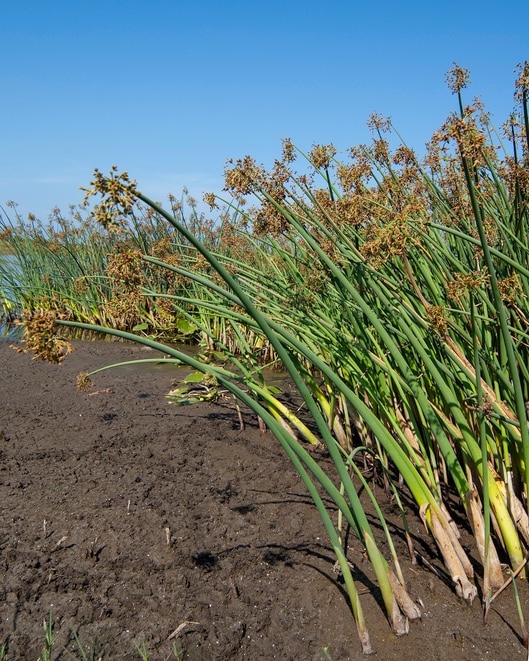
Donna Bollenbach/iStoc / Getty Images Plus via Getty Images
Easier to control than their cattail relatives, soft-stem bulrush makes a great pond plant. They don’t grow as tightly clustered as cattails, making it easier for fish, frogs, and small animals to navigate through them.
Zone 4: Deep-Water and Oxygenating Plants (Planting Depth: Over 40 Centimeters)
If your pond is deep enough, plants like lotus water lilies can fit right in. They root in the substrate far below the surface, in over 16 inches of water. Then their leaves reach toward the surface and typically float there. They adapt to changing water levels with ease and help oxygenate the water.
Hardy Water Lily (Nymphaea spp.)

traveler1116/E+ via Getty Images
Water lilies grace ponds around the world, lending a classic look (and a perfect frog resting spot) to ponds. They root at the bottom of your pond, sending shoots to the surface where showy flowers emerge during the summer.
Recommended Product
Lotus (Nelumbo spp.)
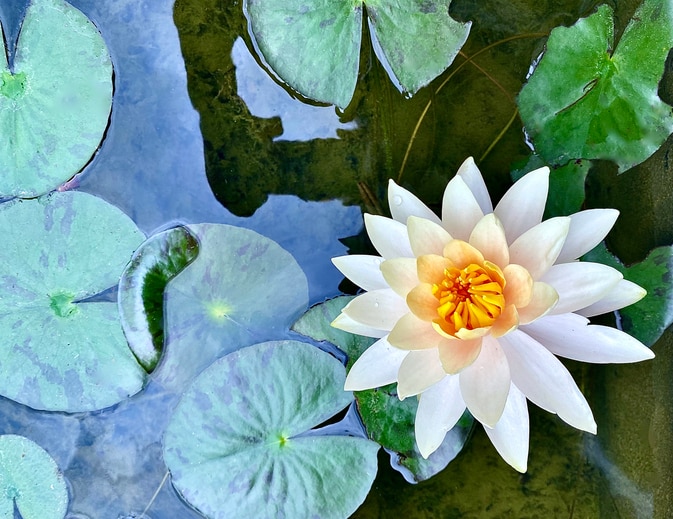
Kiara Bloom/iStock / Getty Images Plus via Getty Images
There are two water lotus species: the sacred lotus (native to Asia) and the American lotus. These well-known pond plants are often pictured alongside koi and bloom in pale shades of white, pink, or yellow with papery petals that reach 11 inches wide.
Lotus roots anchor the plants to the substrate while leaf stalks can grow over 6 feet long—either floating on or emerging from the water.
Zone 5: Floating Plants
Floating plants that require no soil are easy to add to ponds—just drop them in and let them grow! The roots of some species dangle below the main plant, where they help filter toxins and shelter small fish.
Water Lettuce (Pistia spp.)
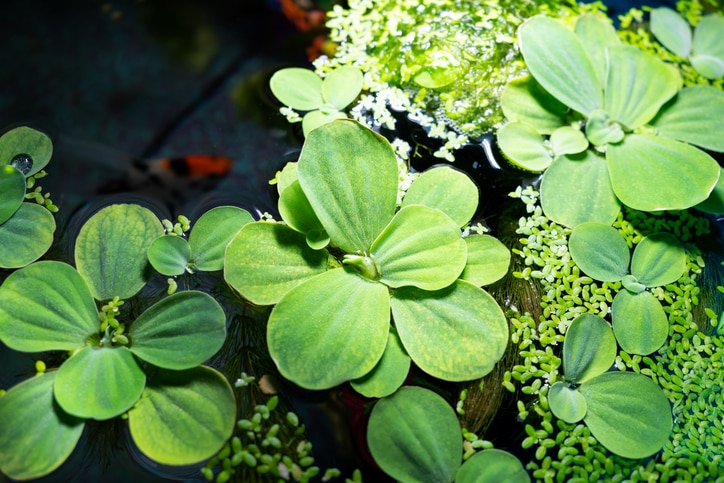
Staras/iStock / Getty Images Plus via Getty Images
Also called water cabbage, water lettuce has been found on every continent except Antarctica. This pond plant is popular in water gardens because leafy greens up to a foot wide add gorgeous texture to ponds.
Water lettuce has dense, feathery roots that provide shelter to smaller fish. Its ability to inhibit algae growth, remove heavy metal toxins, and provide both food and shelter to your fish makes it beneficial to every pond.
Water lettuce is considered an invasive species, so check your state regulations before adding this plant to your pond.
Water Hyacinth (Eichhornia spp.)
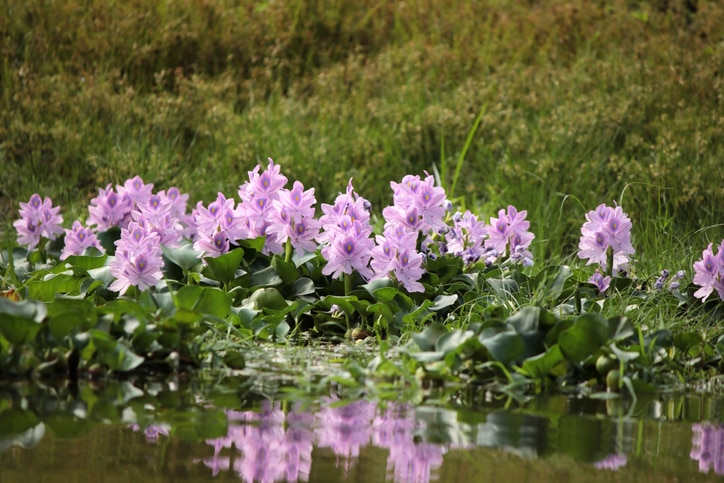
Socha/iStock / Getty Images Plus via Getty Images
Native to South America, water hyacinth plants are fast-growing with clusters of eight to 15 purplish-blue flowers per stalk. In North America, the flowers may attract hummingbirds and butterflies while the plants help oxygenate the water.
Like water lettuce, water hyacinth is also an invasive species. Be sure to check your local regulations.
Mosaic Plant (Ludwigia sedoides)
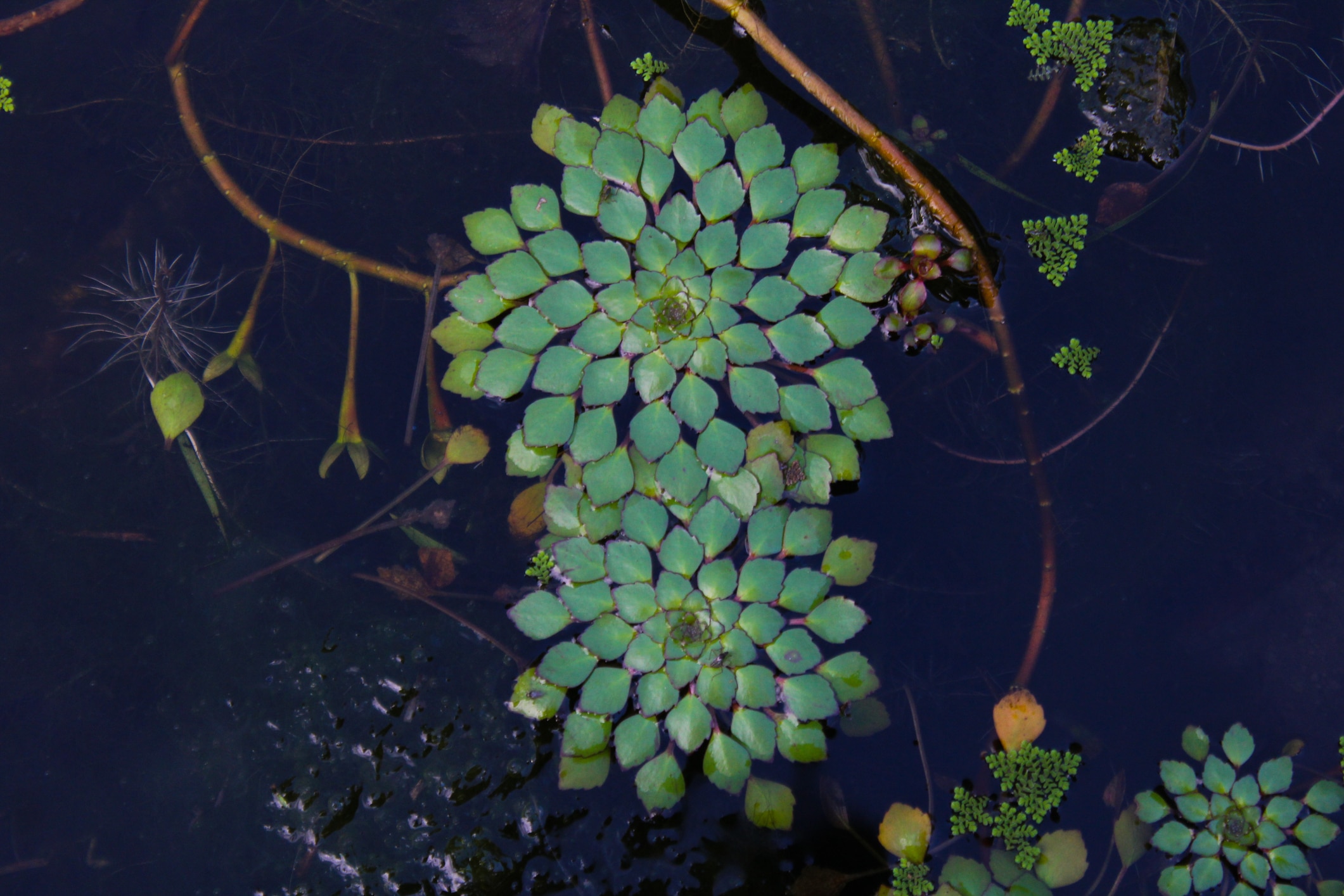
Leo botanist/iStock / Getty Images Plus via Getty Images
Also known as false loosestrife, mosaic plant is native to Central and South America. It grows in still water with lots of sun, producing pretty, yellow flowers on the floating rosettes when it’s healthy.
Recommended Product
Hornwort (Ceratophyllum demersum)
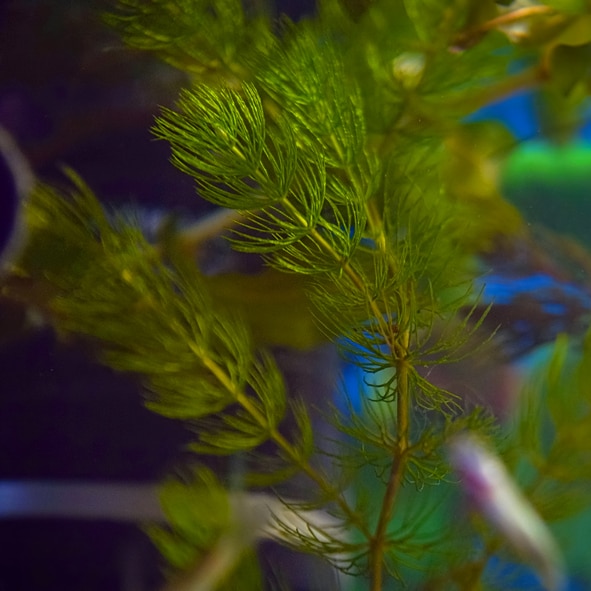
Pro2sound/iStock / Getty Images Plus via Getty Images
This versatile, self-propagating (spreads on its own) pond plant can be added as a floating plant. Hornwort grows long feathery fronds that look beautiful while oxygenating the water, providing shade, and reducing algae growth.
Attributions
This content was reviewed by aquatic fish expert Joseph Hiduke.
